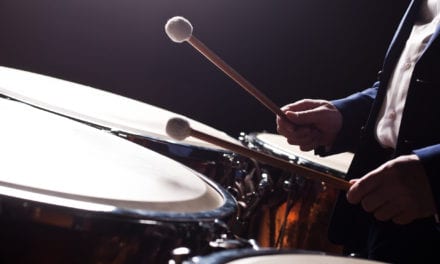By Fran Kick
Performing music musically pushes us beyond the notes, rhythms, articulations and dynamics. Whether you’re a brass, woodwind or string player; a member of the color guard or a percussionist – playing music and performing to music needs to move both the performers and the audience emotionally beyond what’s printed on the page
or counted in our heads.
But how do we inspire students to reach that sometimes-elusive emotional quality that lifts a performance to a higher level?
Educational research suggests that about 65 to 75 percent of us are “visual” learners. That means we actually “see” ideas in our mind’s eye–visually remembering details via images we mentally paint in our heads whenever we learn something. What do you “see” in your mind during that phrase of music? What do your students “see” in their minds during that same phrase of music? If it’s just what’s printed on the page or choreographed to counts – you might be missing out on helping students make an emotional
connection with the music and the audience.
So what could you do to nurture more emotion in your student’s performance? Well here are three things you can try:
- Define the various passages of music pictorially. Figure out what each section of music represents in your mind. Share with others and come up with various images or pictures that you collectively come to consensus when it comes to what best fits what the music is saying.
- Set aside some space on a bulletin board in your room and tack up the pictures you and your students pick. Look for images in magazines, books, online, even encourage students to create some original artwork themselves.
- Find short sequences or scenes in movies that represent visually what you’re striving to create musically. In addition to popular movies from the present and the past, remember to check out documentaries and National Geographic films.
You get the idea. Create what a graphic designer would call a reference file of swipes or a collection of similarly inspiring visual representations of what you hope to emotionally communicate to the audience during your performance, and soon your students will be playing with more emotional inspiration.


